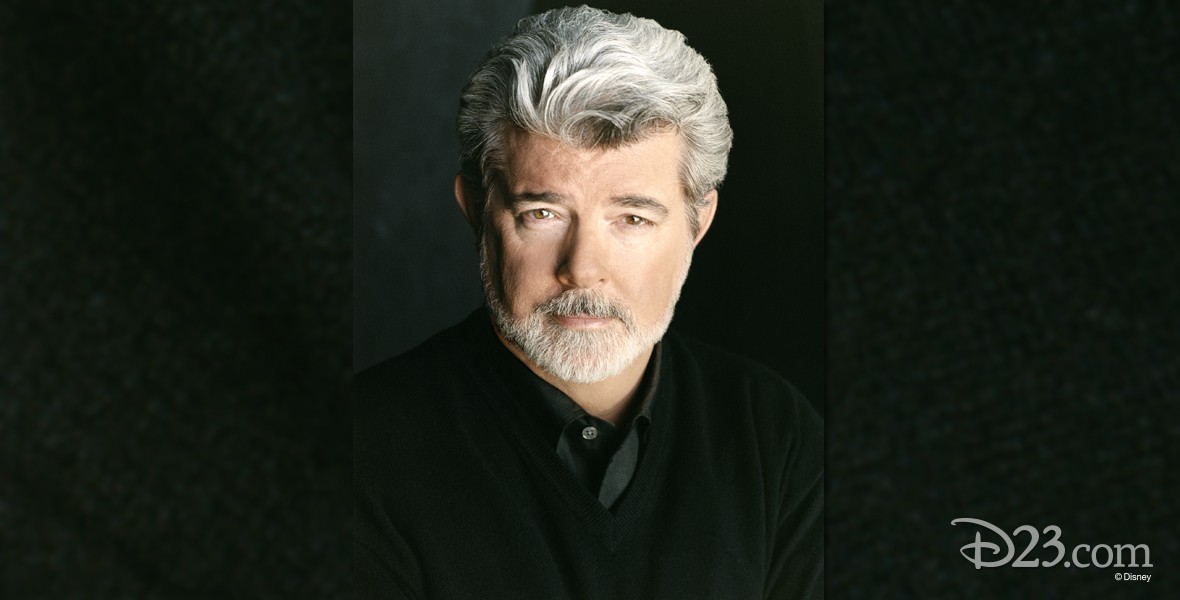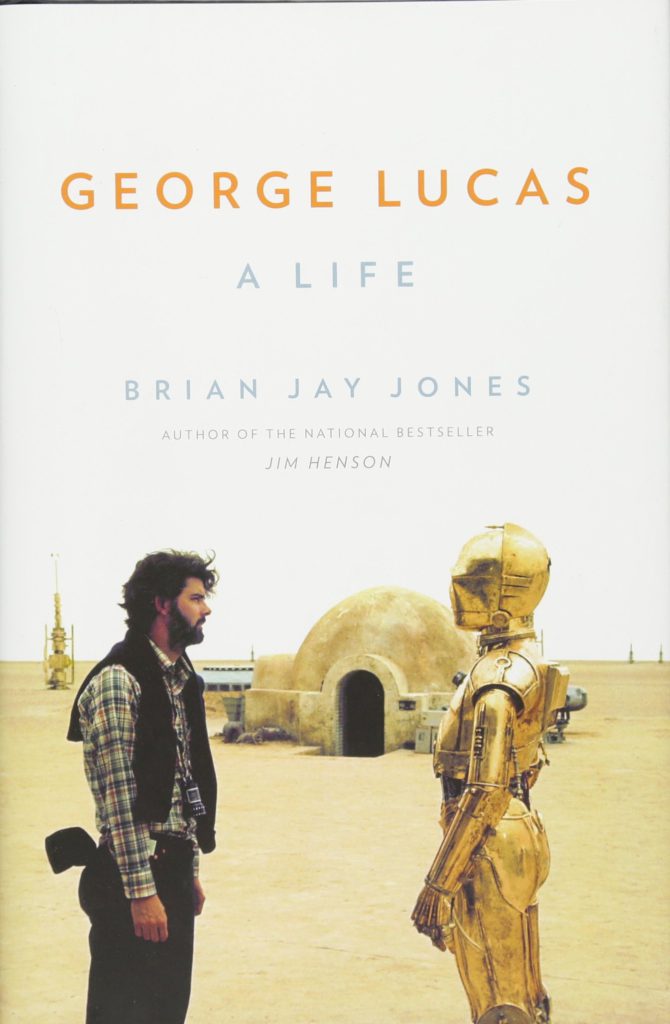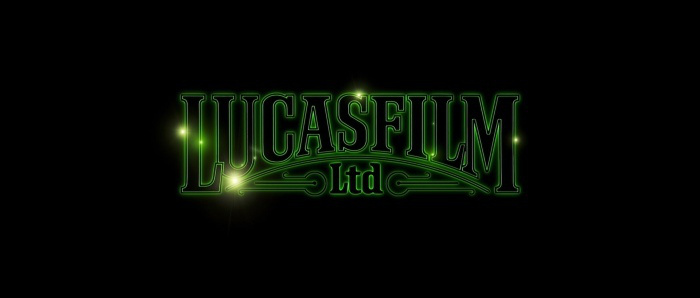Book Review: “George Lucas: A Life” by Brian Jay Jones
Simply titled George Lucas: A Life, Brian Jay Jones’ latest book details the life of the Star Wars maestro. Coming in at 472 pages, the unauthorized biography probes the life of George Lucas on multiple levels.
Jones starts the book off with a snapshot of life on the set of Star Wars in 1976, but he doesn’t stay there for long, and then begins the book proper with the birth and childhood of Lucas. We learn about his ancestors, and Lucas’ father George Lucas Sr. George Lucas was not the best student in school, and much to the dismay of his successful father, he left for USC and enrolled in film school. One can imagine the many references to Indiana Jones being called junior in Indiana Jones and the Last Crusade come from the youth Lucas lived.
We also get to learn how much George Lucas loved Walt Disney and that he was there on opening day for Disneyland in July 1955. His father had driven the whole family down for the occasion. This exposure to a make believe world like Disneyland possibly inspired Lucas to be creative from a young age. He later partners with Disney on multiple projects, bringing the Star Tours ride to Disney Parks, helping to produce the epic Michael Jackson short film Captain EO, directed by his longtime friend Francis Ford Coppola, and then ultimately selling his Lucasfilm to the Walt Disney Company.
George Lucas is passionate about film and demands things to be done his way. He breaks the rules at school, and when he finally emerges into Hollywood, partnering with Francis Ford Coppola, Lucas is set on making movies his way. The problems he encounters with movie studios and their meddling in his movies like THX 118 and American Graffiti leave a scar on Lucas. This last movie would make him an overnight success in Hollywood, and despite failing at getting the rights to the old Flash Gordon serial shows, Lucas was now able to pursue his dream of doing a Flash Gordon-like movie.
Jones portrays Lucas in a positive light. He sticks to the facts and allows the creation of Star Wars to become an epic struggle of a visionary director against a corporation that was only interested in the cost. The proof of how visionary George Lucas was is the contract that he negotiated with 20th Century Fox Studios that in exchange for the money to make Star Wars he was able to maintain control of sequel rights and merchandising. No one was thinking about sequels and merchandising in the 1970’s, but George Lucas was.
The book continues on with a look at the success of Star Wars, and how Lucas was able to build his private company Lucasfilm into the billion dollar goliath that includes Industrial Light and Magic (ILM) the special effects wonder place that created the special effects to mega movies like Jurassic Park and Avatar.
A biography of George Lucas is going to have a lot of detail about Star Wars. From the original trilogy to the prequel trilogy of the early 2000’s because when all is said and done, George Lucas will always be connected to Star Wars.
Jones does take time to explore the other movies that Lucas produced through Lucasfilm, like Willow, Indiana Jones, and the friendships that have lasted for decades, such as his long-lasting friendship with Steven Spielberg and his on again and off again friendship with Francis Ford Coppola.
The author spends many pages detailing the early years of the Coppola friendship and always comes back throughout the decades of the falling out and make ups that these two Hollywood legends had. His friendly rivalry with Steven Spielberg is explored in depth in the book, and we see how much George Lucas is an intelligent businessman, and in a world of his own compared to his contemporaries.
The desire for control inspired George Lucas to do something unthinkable to most filmmakers in the early 80s. When he was preparing The Empire Strikes Back, rather than getting funding from 20th Century Fox, Lucas got the funding from the bank, and then bet all of his money he earned from the first movie on the sequel, which paid off magnificently. 20th Century Fox signed a smaller deal to distribute the film. The man so aggravated by the changes from his first movie THX 118 had his revenge, he now had control. Lucas would make billions of dollars off the movies in many ways with toy sales being the most lucrative.

Not a surprise to any Star Wars fan, George Lucas had a hard time writing scripts. Lucas often referred to the writing process as ‘bleeding on a page’. Many would see this difficulty stand out with the Star Wars prequel trilogy. Here Lucas was in full control, and Lucas always got his way. It was George Lucas who thought Jar Jar Binks was a great idea!
Jones is sympathetic to his subject, even when he discusses Lucas’ divorce from his first wife Marcia. We get the idea of what type of person George Lucas is from this book, and the picture that is painted is a good one. George Lucas has his flaws. He may not be the most agreeable person to work with or for, and he may unnecessarily tinker with his movies when he shouldn’t, but he is still a good guy.
When you think of unauthorized biographies, readers might think of a hit job with a writer out to scandalize the subject. If the subject of the book is still alive, in many ways these books paint an unflattering picture of the person. Brian Jay Jones seems to avoid this in his work. His George Lucas: A Life is an honest portrayal of a man that is admired around the world, vehemently disliked for digitally tinkering with the first three Star Wars movies, and by nature is a hard working quiet kind of guy. Jones presents the "warts and all" treatment of Lucas, and by being genuine in his writing, the reader will see that even the negative bits about George Lucas, just makes him human.
Star Wars fans, cinema enthusiasts, and Disney fans will want to read this book. To those who only know George Lucas as the guy who created Star Wars, read this book, and learn about the pioneering filmmaker that he is and why The Walt Disney Company didn’t just pay $4 billion dollars for Star Wars.


